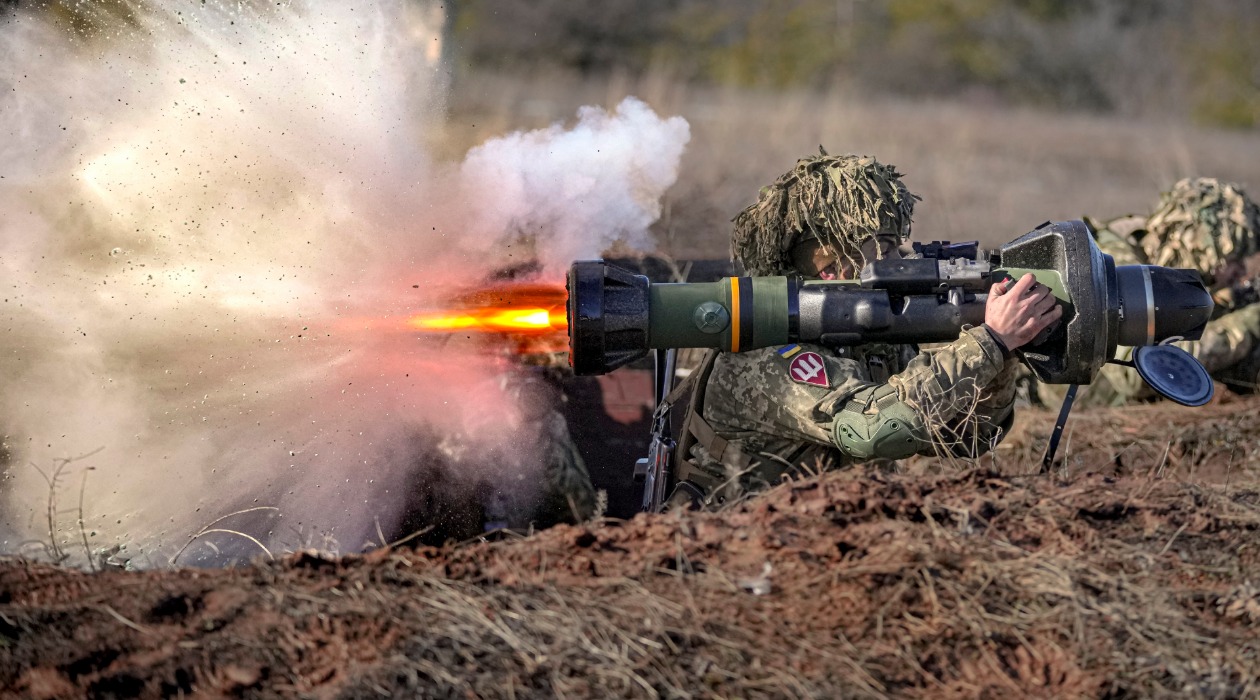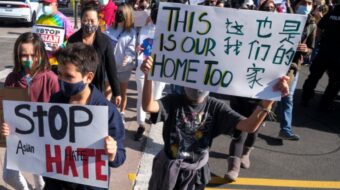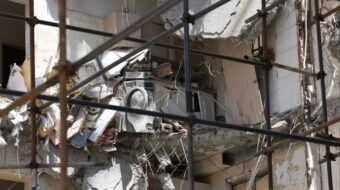
After U.S. credibility was strained again Thursday by yet another declaration coming from President Joe Biden that he expects a Russian invasion of Ukraine in the next few days, Secretary of State Antony Blinken rushed to the U.N. to assure the Security Council that “I am here today not to start a war but to prevent one.” He followed his declaration with a string of provocative remarks and claims that Russia is on the verge of invading Ukraine. Russia insisted, once again, that it has no such plans.
In Moscow, Maria Zakharova, a spokesperson for the Russian foreign ministry told the press that she hoped the U.S. would make up its mind soon about the day Russia will invade because the shifting predictions have forced her to repeatedly give up plans to take time off work. She issued a “request…for the schedule of our ‘invasions’ for the coming year,” in a jab at the Western powers and corporate media. “I’d like to plan my vacation,” she said.
Some in the U.S. intelligence community, noticing that their predicted Feb. 16 invasion failed to materialize, are now circulating Feb. 20 as the new date on which the world can expect the invasion to begin.
The real war danger, however, has dangerously increased as the result of several moves by the U.S., not Russia, in the last two days.

First, the U.S. response to Russia’s main security demands, a halt to NATO expansion and rolling back the placement of offensive NATO weapons in countries that border Russia, are still being ignored, with the U.S. proposing only that Russia can inspect its missile placements in a ring around that country.
That inadequate response comes as the U.S. this week added Tomahawk missiles that can be fitted for nuclear weapons to a military base in Poland, just 300 miles from the Russian border. On Friday, a billion dollars worth of additional tanks were also sent to Poland. Earlier this past week, the U.S. took over two military bases in Slovakia which are also being fitted with similar weapons.
Second, the 150,000 Ukrainian troops on the border with the Donetsk and Lugansk republics in eastern Ukraine have stepped up their shelling of towns inhabited by Russian-speaking civilians. For eight years now the Ukrainian Army, under the command of neo-fascists as per deals made by the Ukrainian government in 2014, has killed between 15,000 and 20,000 Russian-speaking civilians in the region. None of this is mentioned in Western press reports, which only reported Friday morning that three people were injured in a shelling attack by the separatists on the Ukrainian Army side.
After the Russians at the U.N. Thursday characterized the attacks by the Ukrainian Army as “genocide,” it was announced this morning by the government in Donetsk that to protect the population from Ukrainian Army attacks they were planning mass evacuations of civilians across the border into Russia.

The increased tension in the east is precisely what can be expected from the hyperbole and fear-mongering by the Biden administration, especially when it is coupled with massive arms shipments to Ukraine, which have been funneled to the Ukrainian Army stationed in the east. As the tension predictably increases, the Biden administration has tried to characterize the outbreak of fighting as “false flag operations” by the Russians, moves intended to justify an invasion.
All of this happened Thursday after the Russians announced several additional troop reductions from the areas along the Ukraine border. The U.S. claims the Russians have not reduced the placements of troops along Ukraine’s borders.
U.S. diplomats, in an example of analytical nonsense, are saying Russia is trying to overturn “30 years of peace” in Europe allegedly brought about by NATO. The claims are absurd enough on their face when we see the war danger unfolding over Ukraine but are clearly even more absurd when we go back a bit in history.
After World War II, there began a period of almost 50 years of peace in Europe resulting from the presence of the Soviet Union and a bloc of socialist countries in Eastern Europe. The continent, in its entire history, had never experienced a half-century of peace before that. Once the Soviet Union was dismantled and the socialist countries disappeared, NATO filled the vacuum. Conflicts and wars, beginning with fratricide and genocide in Yugoslavia, began and continued up until what we see developing today.
U.S. diplomats also point to Crimea and Georgia to claim that “Russia is trying to do the same thing today in Ukraine.”
Russia is accused of being responsible for having “invaded” Crimea, for example, in 2014. The reality of the situation was that the people of Crimea voted to rejoin the Russian Federation in the period after the fascist coup in Kiev when the new right-wing government banned use of the Russian language and started rounding up and killing trade unionists. Many were murdered in Odessa, in Crimea. Some 90% of the population of Crimea was Russian, and they feared that they would be under attack by the Ukrainian government.

Russia is also accused of having invaded Georgia in 2008. In response to the mass slaughtering of South Ossetians by the Georgian government, tens of thousands there fled into Russia at that time. The killing of South Ossetians did not stop until Russia sent troops to end it. South Ossetia, which was in the northern part of Georgia, is now recognized by Russia as an independent republic.
Russia has said that if the U.S. continues to ignore its key security issues, it could be forced “to respond with measures of a technical military nature.” Some interpret that as an indication that they would move their missiles closer to their own borders.
Russia does not, like the U.S., station nuclear weapons outside of its own territories, and in no case does it place such missiles near U.S. borders. Putin has condemned the U.S. for “bringing their nuclear missiles right up to our doorstep, our home.”
Blinken claimed Thursday when asked about responding to Russia’s security demands, that he had not yet gotten around to reading the Russian response to the U.S. answer. He nevertheless tried to show U.S. interest in peace by saying he wanted another meeting with the Russians next week, “if there was no war.”
Russian Foreign Minister Sergey Lavrov did not say whether he would accept such a meeting. “Blinken hasn’t even gotten around to reading Russia’s response, and he is already calling Lavrov to a meeting. What are they going to talk about?” a Russian foreign ministry spokesman told the press.










